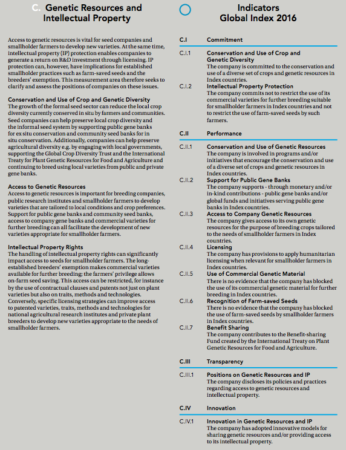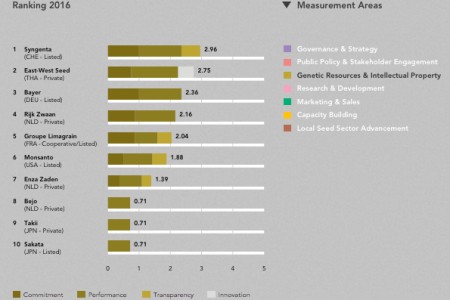- Climate change is going to hit us where we live. Or die.
- How to make GBIF more relevant for agrobiodiversity: a 10-point plan.
- Killer fungi on the loose? ‘Twas ever thus. But genomics will save us?
- Planting trees is good for lions too.
- There are still medieval oaks in England.
- “…where sommelier-like ‘budtenders’ sell gourmet ganja in a designer showroom.”
- Rewilding the wild horse.
- More about the cassava variety Kasetsart 50, poster child for CGIAR impact.
- It’s not just genetic resources that are contested. Yep, agronomy too.
- “Scientific conclusions and business or policy decisions should not be based only on whether a p-value passes a specific threshold.”
Brainfood: Chinese royal jelly, Diverse wine yeasts, Heirloom values, Oil and biodiversity, Grassland management, Maize and culture, Minimum viable populations, Good coffee
- High Royal Jelly-Producing Honeybees (Apis mellifera ligustica) (Hymenoptera: Apidae) in China. China supplies 90% of the global market?
- Taking Advantage of Natural Biodiversity for Wine Making: The WILDWINE Project. Back to the future, via yeast diversity.
- Conservation of Landrace: The Key Role of the Value for Agrobiodiversity Conservation. An Application on Ancient Tomatoes Varieties. Fancy maths shows farmer maintaining heirloom tomato variety in Perugia could be charging more.
- Are changes in global oil production influencing the rate of deforestation and biodiversity loss? Less oil production, more agricultural expansion, more biodiversity loss.
- Grazing vs. mowing: A meta-analysis of biodiversity benefits for grassland management. Grazing. Probably. The data sucks.
- Maize diversity associated with social origin and environmental variation in Southern Mexico. Ethnicity trumps altitude in genetic patterning. Morphology is all over the place.
- Genetics in conservation management: Revised recommendations for the 50/500 rules, Red List criteria and population viability analyses. One we missed. 100/1000 is the new 50/500. Multiply by 10 for census population sizes to avoid inbreeding and retain evolutionary potential, respectively.
- Advances in genomics for the improvement of quality in Coffee. We’ll need to sequence the wild species too.
Nibbles: PPB, AnGR, Children of the corn, African wildlife & China, Japanese plastic food, Hedge balls, Falanghina et al., NY hipster kava bar, Genetics & diet
- The next step in the evolution of participatory plant breeding is evolutionary plant breeding.
- 1458 livestock breeds are in trouble.
- A blast from corn’s past. In more ways than one, as this article from High Country News is kinda old.
- The Chinese market in African wildlife is bad for both.
- Let them eat plastic.
- Maclura pomifera is apparently all the rage in Iowa.
- There’s more to Italian wine than chianti.
- “You can’t really get fucked up on kava.” I beg to differ.
- Two independent pieces on the continuing evolution of humans to cope with their diet: starch, milk and meat.
More access to the data on the Access to Seeds Index needed?
I took Jeremy’s advice and have been doing some digging around the excellent Access to Seeds Index website. So have a lot of other people, of course, to extract what’s relevant to their own particular obsession, 1 whether that be women farmers or small seed companies in Uganda or the informal seed sector. 2
Our hobbyhorse here is agricultural biodiversity, of course, and thankfully one of the measurement areas addressed by the Index “seeks to capture how companies handle genetic resources and IP in ways that support the opportunities for smallholder farmer development.” The Index is calculated separately (for this and a further 6 measurement areas) for field crops, vegetables and companies active in East Africa. Here’s the ranking for the Genetic Resources & Intellectual Property measurement area as far as vegetables are concerned.
There are brief text summaries to go along with this ranking, as well as those for field crops and East Africa, but you have to do some jumping around on the website to get them, so I’ve taken the liberty of pooling them all together below:
Syngenta is the only company with a formal commitment not to pursue or enforce patents and applications in seeds or biotechnology in least-developed countries for private use by subsistence farmers. Companies provide access to their genetic resources. Monsanto, DuPont Pioneer, Dow AgroSciences and Bayer all collaborate with local partners to provide access to specific genetic material or biotechnology traits. This ranges from research on insect-resistant Bt cowpea and water-efficient maize. Support for public gene banks, important for the conservation and use of region-specific crop diversity, is common among global seed companies. But support for local gene banks in Index countries is largely overlooked. An exception for field crops is KWS, which supports public gene banks in Peru and Ethiopia… An exception among vegetable seed companies is East-West Seed, which supports gene banks in Indonesia and Thailand… Whereas global companies have formal commitments in place, most actual activities for the conservation and use of genetic diversity are found among regional companies. East African Seed, Kenya Seed Company and Seed Co, among others, partner with multiple local seed banks and global research institutes. NASECO and Kenya Seed Company also donate their germplasm to public research partners.
You have to refer to the appropriate bit of the methodology to fully understand all that, which means p. 54 of a 70-plus page report.

Unfortunately the methodology write-up is not much help unpacking that “[s]upport for public gene banks … is common among global seed companies,” which I found a bit problematic. The relevant bit of the methodology says:
C.II.2 Support for Public Gene Banks. The company supports– through monetary and/or in-kind contributions — public gene banks and/or global funds and initiatives serving public gene banks in Index countries.
I have a feeling this refers to international public genebanks, rather than national ones, but frankly either way I find it difficult to conceive how this could be described as “common” among seed companies. One wonders if the raw data will be made available for others to make their own determinations. Some objections are already surfacing, including this one from Oxfam quoted in The Guardian:
The EU and other countries have signed the international treaty on plant genetic resources for food and agriculture. It would be interesting if the index would in future score how companies comply with this treaty.
Although, to be fair, one way that companies contribute to the Treaty is in fact already covered by the Index
C.II.7 Benefit Sharing. The company contributes to the Benefit-sharing Fund created by the International Treaty on Plant Genetic Resources for Food and Agriculture.
I would certainly love to see the raw data that went into calculating C.II.7 (and C.II.2 for that matter), as I cannot find anything on the website of the Treaty’s Benefit-Sharing Fund resembling a summary of the contributions made by companies.
Nibbles: Banana trouble, Celebrating Ethiopia, Potato nutrition, Kenyan veggies, Coffee history, Twitty book, Biodiversity loss vid
- The musapocalypse gets an infographic.
- Celebrating agricultural biodiversity in Ethiopia.
- High calcium potato wild relatives in the news. No, really.
- NY Times catches up with the Kenyan leafy green revolution.
- The world’s prettiest (only?) coffee genealogy poster.
- The great Michael Twitty’s long-awaited book on African-American foodways is out.
- Nice video on biodiversity loss actually opens with Svalbard Global Seed Vault.
